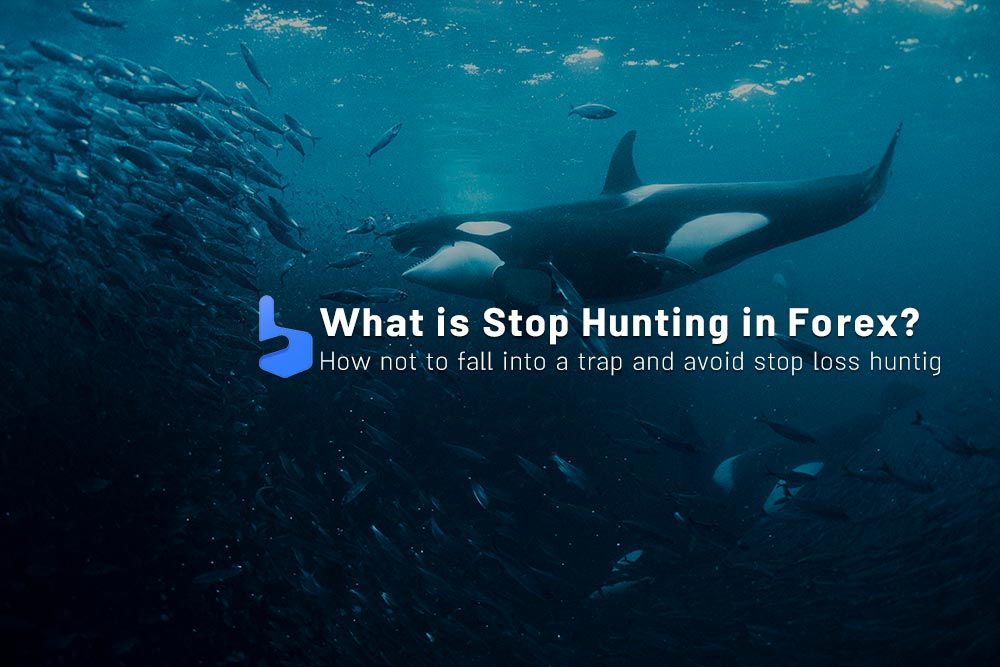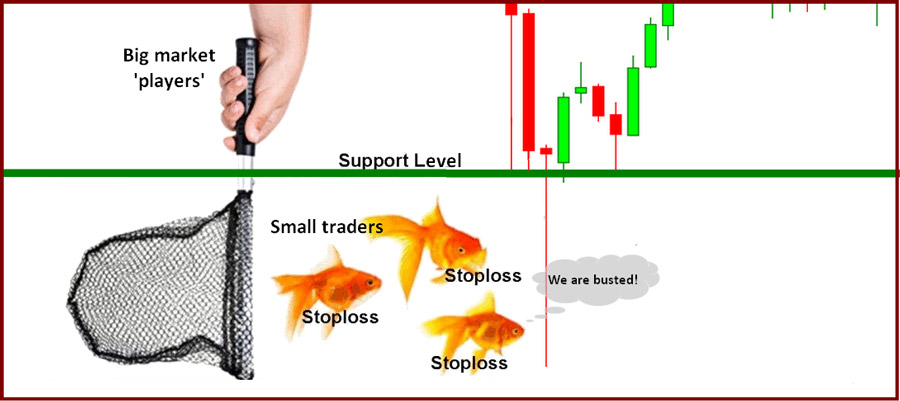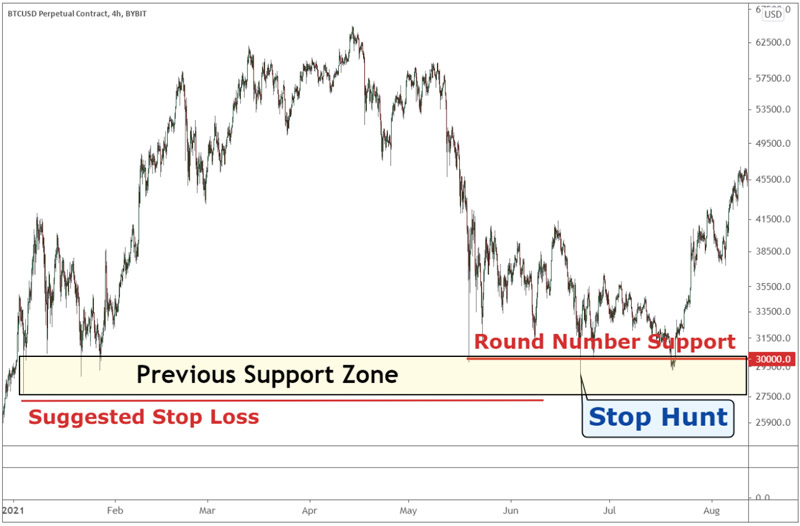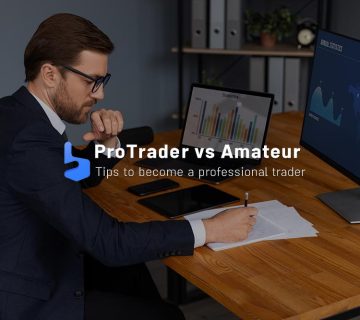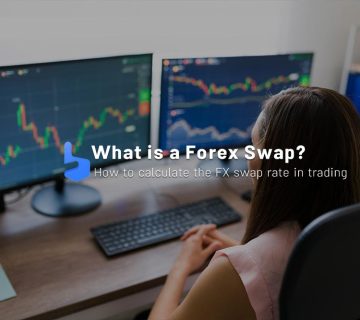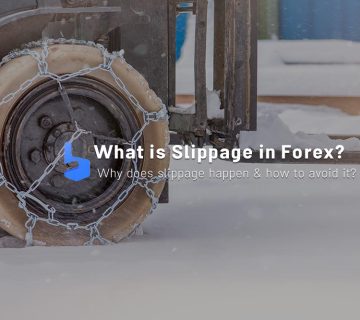What you are about to read:
Often, traders blame their losses on a cunning practice known as “stop hunting.” This typically refers to a covert action by brokers to maximize customer losses and, consequently, their own profits. However, stop hunting can also indicate a process carried out by major market participants.
This action is often associated with large institutional traders, such as banks, hedge funds, or market makers, who have significant financial resources and trading power. It is essential to note that not all major players engage in this practice, and individual traders may unintentionally contribute to this phenomenon through their trading behavior. Brokerland will here explores stop loss hunting and ways to protect from it.
What is Stop Hunting?
Stop loss hunting refers to an act where market participants deliberately target and trigger a large number of stop-loss orders placed by other traders in the market. The main objective is to induce price movements that reach the levels of stop-loss, creating liquidity for traders engaging in “stop hunting” to capitalize on favorable entry points or manipulate the market in their favor.
Stop-loss orders are a type of Forex order that traders use to protect their positions from excessive losses and prevent being stopped out. These orders are placed at specific price levels, usually below the current market price for buy positions and above for sell positions, to protect traders’ positions from excessive losses and margin calls. Stop loss hunting analyzes the market for certain types of stop-loss orders, often located near support and resistance levels, round numbers, or key technical forex indicators like the moving average.
Stop hunters use various tactics and market manipulation to execute stop-loss orders when identified. This can include placing large buy or sell orders to create the illusion of a significant price movement or collaborating with other participants to amplify the effect. When the market moves towards stop-loss levels, it triggers more buying or selling, accelerating market momentum.
Starting and executing stop-loss orders provide liquidity for these hunters. When the initial wave of buying or selling subsides, the market may reverse its direction, benefiting those who engaged in stop hunting. In essence, it is a form of market manipulation.
The fact that the price of an asset can experience significant movements when excessive stop-losses are triggered is precisely why traders resort to stop loss hunting. Price fluctuations are beneficial for traders as they present potential trading opportunities.
For instance, imagine a company’s stocks trading at $50.36 and appears to be decreasing. Many traders may set their stop-losses just below $50, say $49.99, to preserve their positions, benefit from an upward move, and limit potential downside.
If the price drops below $50, traders expect a cascade of sell orders due to the creation of numerous stop-losses. This brings the price down, allowing some traders to profit from the downward move and perhaps open long positions in the expected return to the previous order block range.
Impact of Stop Loss Hunting on Individual Traders
Stop hunting and premature execution of stop-loss orders placed for position protection can lead to losses, even if the traders’ initial analysis is correct, and the market ultimately moves in the expected direction. Psychologically, it can have a negative impact on traders, leading to repeated experiences of disappointment, loss of confidence, emotional decision-making in subsequent trades, and ultimately undermining trust in the forex market, perceiving it as unfair and manipulated.
How to Protect Yourself
Avoiding stop hunting in forex trading is challenging as it involves large institutional players and dynamic market forces beyond the control of individual traders. However, there are several strategies to reduce the likelihood of falling victim to stop loss hunting and safeguard your positions:
Use Mental Stops: Instead of placing visible stop-loss orders in the market, use mental stops. Mental stops are stop-loss levels that you track in your mind but do not place as actual orders. This keeps your stop-loss level less visible in the market, making it less of a target for hunters.
Trade with Trusted Brokers: Choose a reputable and well-regulated forex broker known for fair practices. Brokerland’s reviews thoroughly examine various brokers, including Alpari and IronFX. Trustworthy brokers are less likely to engage in or tolerate stop hunting, as it can harm their reputation and lead to legal consequences.
Avoid Obvious and Initial Stop-Loss Levels: Refrain from placing stop-loss orders at obvious levels, such as round numbers, major support and resistance zones, or common technical indicators like the RSI. Instead, consider stops at less apparent levels that still align with your risk management strategy.
Be cautious during high volatility: Stop loss hunting is more common during periods of high volatility, where price changes are irregular and sudden. Exercise caution when trading during the release of important forex news or economic events in the market, as these periods often attract aggressive market manipulation.
Use multiple time frames: Analyze the market from various time frames to gain a comprehensive view of price performance, exactly as explained in multi-time frame analysis. Stop hunting activities on lower time frames may not be significant in higher time frames, so understanding the bigger picture can help you avoid getting caught in such movements.
Trade during low liquidity times: Stop loss hunting activity tends to cease during periods of low liquidity in forex sessions, such as weekend holidays or off-market hours. Consider trading during these times to reduce the risk of being targeted.
Keep position sizes reasonable: Avoid placing disproportionately large trades in the market, especially near significant levels. Exposing more than necessary capital may attract unwanted attention from hunters.
Diversify and risk management: Diversify your trading strategies and spread risk across different currency pairs to reduce the impact of stop hunting on individual positions.
Avoid chasing the market: Refrain from placing stop-loss orders too close to the current market price, as hunters may intentionally trigger them with rapid market movements. Allow sufficient breathing room for your trades and resist the temptation to chase prices.
Monitor orders and volume: If your trading platform provides access to data and volume information, pay attention to sudden increases in order activity. Unusually high volumes near your stop-loss level may indicate potential attempts at stop-hunting.
Stay informed and educated: Stay informed about market news, important events, and potential factors that may lead to a halt in stop hunting activities. Consistency in market awareness and ongoing forex education can help you make more informed trading decisions.
Remember that stop loss hunting is an inherent risk in forex trading, and no strategy can completely eliminate it. Focus on creating a robust risk management plan, always use an appropriate risk/reward ratio, diversify your trading portfolio, and maintain discipline in your trading approach. By doing so, you can minimize the impact of stop hunting and increase your chances of success in the forex market.
Summary
In summary, stop loss hunting, where larger institutions and brokers manipulate the market by triggering stop-loss orders of traders, remains a contentious issue in the forex market. Some traders consider it a necessary part of trading, while others view it as unethical.
Understanding the mechanics and impact of stop hunting can help traders make informed decisions and develop effective strategies to navigate this phenomenon. Traders, by employing risk management techniques and vigilance during high volatility periods, can reduce the adverse effects of that and enhance their overall trading experience in the forex market.

